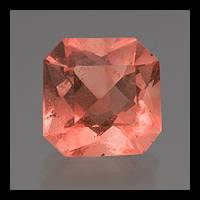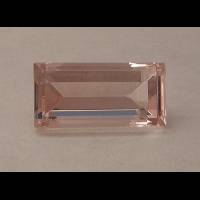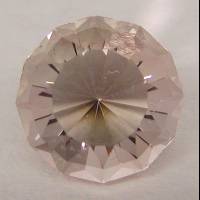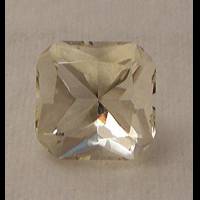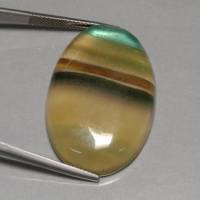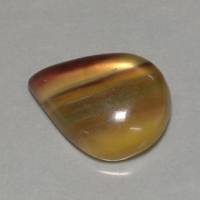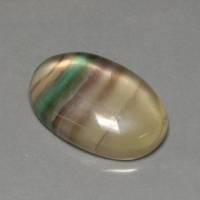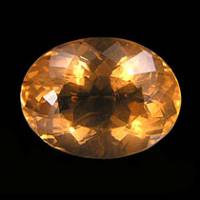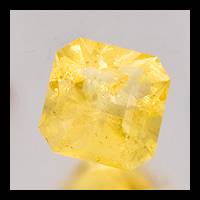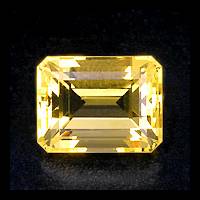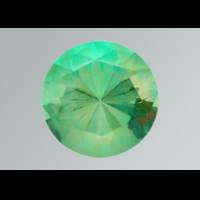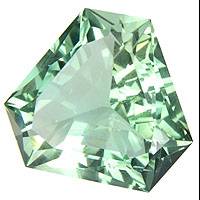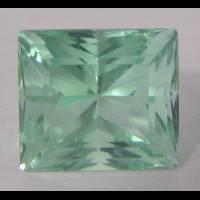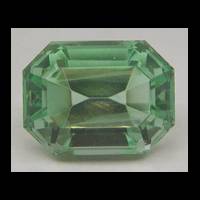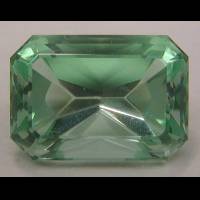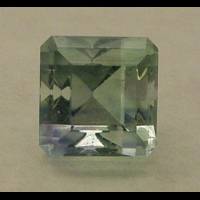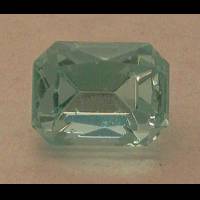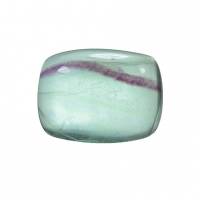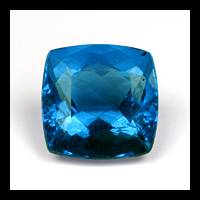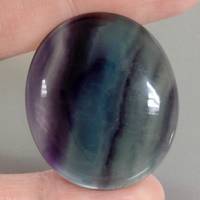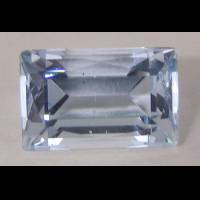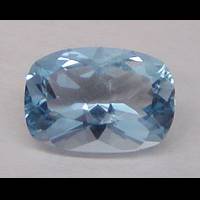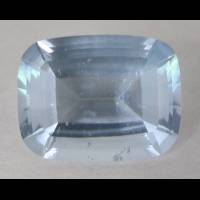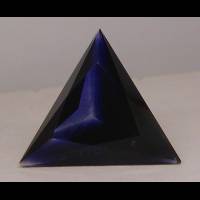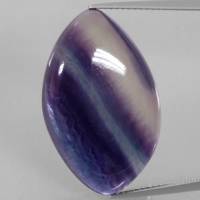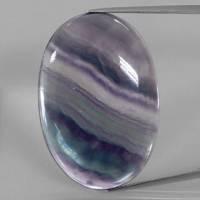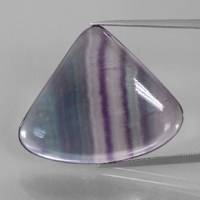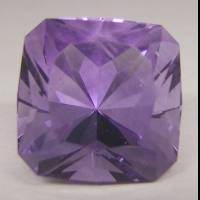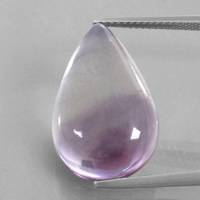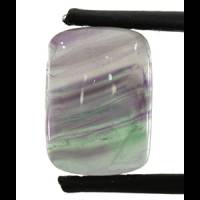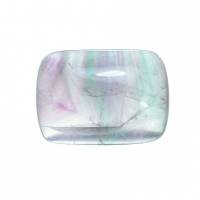Fluorite
The word Fluorite derived from the Latin "fluo" - to flow, because the mineral is used as a flux in iron smelting.
Fluorites from certain localities exhibit a very strong fluorescence, due to impurities in the crystal. In 1852 the phenomenon of fluorescence was named after fluorite. It also gave the name to its constitutive element fluorine.
Fluorite has a wide range of colours, which depends on impurities, exposure to radiation, and the size of the colour centers. Colour distribution is often zonal or spotty.
Fluorite can be used in jewelry, cut into beads. But it is not widely used as a semiprecious stone because of its low hardness.
Fluorites from certain localities exhibit a very strong fluorescence, due to impurities in the crystal. In 1852 the phenomenon of fluorescence was named after fluorite. It also gave the name to its constitutive element fluorine.
Fluorite has a wide range of colours, which depends on impurities, exposure to radiation, and the size of the colour centers. Colour distribution is often zonal or spotty.
Fluorite can be used in jewelry, cut into beads. But it is not widely used as a semiprecious stone because of its low hardness.
Fluorite Gemstones by Colour
This table shows the variety of hues this gemstone can be found in. Click on a photo for more information.
Fluorite Gemstones by Size
This table shows distribution of Fluorite gemstone sizes that are listed on this site. This can give a good indication as to the general availability of this gemstone in different sizes.
Contributed photos
Lightest:0.21 cts
Heaviest:450 cts
Average:35.22 cts
Total photos:64
Do you have a larger Fluorite? Why not upload a photo?
| General Information | |||||||||||||||||||||||||||||||||||||||||||
|---|---|---|---|---|---|---|---|---|---|---|---|---|---|---|---|---|---|---|---|---|---|---|---|---|---|---|---|---|---|---|---|---|---|---|---|---|---|---|---|---|---|---|---|
| Varieties/Types: | Blue John - A banded white/purple variety of Fluorite from England. | ||||||||||||||||||||||||||||||||||||||||||
| Other Names/Trade Names: | |||||||||||||||||||||||||||||||||||||||||||
| Chemical Formula |
| ||||||||||||||||||||||||||||||||||||||||||
| Fluorite Treatments | |||||||||||||||||||||||||||||||||||||||||||
| The blue to deep blue to black color seen in some fluorites is derived from a color center, the F-center. This involves an electron-center precursor, and a missing fluorine atom in the fluorite, CaF2. An electron liberated by irradiation or other processes (Nassau, 1983) from a hole-center precursor can be trapped at the fluorine vacancy to become the electron color-center. Many other color-centers are known in fluorite, including those producing yellow, green, violet, pink, and other colors; some of these are stable to light, others are not. The color of most of these color centers can be lightened by a gentle heating to 100-150°C and is totally removed at 200-300°C. This process has long been used to lighten some excessively dark blue john, a deep blue, banded massive fluorite found in Derbyshire, England, and used for carved ornamental objects. Although colored impregnation and dyeing do not seem to have been reported, their use on massive fluorite would not be too surprising. Plastic impregnation is detected by careful examination; the heat and irradiation treatments are not identifiable - Nassau (1984) Artificial irradiation of some colorless to pale green fluorite produces a typical "iolite blue", "tanzanite", "purplish-blue", also dark blue, dark green and bright purple - Blue Chart Gem Identification, Herve Nicolas Lazzarelli, 2010, p 9 | |||||||||||||||||||||||||||||||||||||||||||
| Synthetic Fluorite | |||||||||||||||||||||||||||||||||||||||||||
| Synthetic fluorite in all colours is known. - Gemstones of the world, Walter Schumann, 2001, p 198 | |||||||||||||||||||||||||||||||||||||||||||
| Physical Properties of Fluorite | |||||||||||||||||||||||||||||||||||||||||||
| Mohs Hardness | 4, Blue Chart Gem Identification (2010) More from other references | ||||||||||||||||||||||||||||||||||||||||||
| Specific Gravity | 3.00 to 3.25, Blue Chart Gem Identification (2010) More from other references | ||||||||||||||||||||||||||||||||||||||||||
| Tenacity | Brittle, Gemstones (2009) | ||||||||||||||||||||||||||||||||||||||||||
| Cleavage Quality | Perfect, Blue Chart Gem Identification (2010) Perfect and easyMore from other references | ||||||||||||||||||||||||||||||||||||||||||
| Fracture | Conchoidal, Gemstones of the world (2001) More from other references | ||||||||||||||||||||||||||||||||||||||||||
| Optical Properties of Fluorite | |||||||||||||||||||||||||||||||||||||||||||
| Refractive Index | 1.432 to 1.436, Blue Chart Gem Identification (2010) More from other references | ||||||||||||||||||||||||||||||||||||||||||
| Optical Character | Isotropic, Gemmological Tables (2004) More from other references | ||||||||||||||||||||||||||||||||||||||||||
| Birefringence | None, Gemstones of the world (2001) | ||||||||||||||||||||||||||||||||||||||||||
| Pleochroism | Absent, Gemstones of the world (2001) | ||||||||||||||||||||||||||||||||||||||||||
| Dispersion | 0.007, Gemstones of the world (2001) More from other references | ||||||||||||||||||||||||||||||||||||||||||
| Colour | |||||||||||||||||||||||||||||||||||||||||||
| Colour (General) | Colourless, pink, red, brown, green, yellow, blue, violet. Colour change: blue/violet, smoky brown/lilac, Gemmological Tables (2004) More from other references | ||||||||||||||||||||||||||||||||||||||||||
| Colour (Daylight) | Smoky-brown (from India), Gems, Sixth Edition (2006) | ||||||||||||||||||||||||||||||||||||||||||
| Colour (Incandescent Light) | Mauve (from India), Gems, Sixth Edition (2006) | ||||||||||||||||||||||||||||||||||||||||||
| Causes of Colour | Violet, Mie scattering on calcium microcrystallites. Blue Y3+ + F vacancy +2 electrons. "Emerald" green ("chrome fluorite"), Sm2+. Yellowish green, color center containing Y3+ and Ce associated with an F vacancy. Yellow, O3 color center = O2 substituting for fluorite. Pink, YO2 color center (Y3 + O3-2). Color change, Y3+ associated color center and Sm2+, with minor influence of a Ce3+ associated color center, Pragmatic Spectroscopy For Gemologists (2011) | ||||||||||||||||||||||||||||||||||||||||||
| Transparency | Transparent,Translucent,Opaque, Gemmological Tables (2004) More from other references | ||||||||||||||||||||||||||||||||||||||||||
| Lustre | Vitreous, Gemstones (2009) | ||||||||||||||||||||||||||||||||||||||||||
| Fluorescence & other light emissions | |||||||||||||||||||||||||||||||||||||||||||
| Fluorescence (General) | Commonly blue to violet or green, Gemmological Tables (2004) | ||||||||||||||||||||||||||||||||||||||||||
| Fluorescence (Long-Wave UV) | Inert to strong blue to green, Blue Chart Gem Identification (2010) More from other references | ||||||||||||||||||||||||||||||||||||||||||
| Phosphorescence | Some specimens phosphoresce, Gems, Sixth Edition (2006) | ||||||||||||||||||||||||||||||||||||||||||
| Triboluminescence | May show triboluminescence, Gems, Sixth Edition (2006) | ||||||||||||||||||||||||||||||||||||||||||
| Thermoluminescence | May show thermoluminescence, Gems, Sixth Edition (2006) | ||||||||||||||||||||||||||||||||||||||||||
| Crystallography of Fluorite | |||||||||||||||||||||||||||||||||||||||||||
| Crystal System | Isometric, Blue Chart Gem Identification (2010) More from other references | ||||||||||||||||||||||||||||||||||||||||||
| Habit | Cubic, massive, Gemstones (2009) | ||||||||||||||||||||||||||||||||||||||||||
| Geological Environment | |||||||||||||||||||||||||||||||||||||||||||
| Where found: | Fluorite occurs in low-to-high temperature hydrothermal veins, granites and granite pegmatites, Gems, Sixth Edition (2006) | ||||||||||||||||||||||||||||||||||||||||||
| Inclusions in Fluorite | |||||||||||||||||||||||||||||||||||||||||||
| Negative crystals, two- or three-phase inclusions, healing cracks, crystal inclusions - Gemmological Tables, Ulrich Henn and Claudio C. Milisenda, 2004, p 1 | |||||||||||||||||||||||||||||||||||||||||||
| Further Information | |||||||||||||||||||||||||||||||||||||||||||
| Mineral information: | Fluorite information at mindat.org | ||||||||||||||||||||||||||||||||||||||||||
| Significant Gem Localities | |||||||||||||||||||||||||||||||||||||||||||
| |||||||||||||||||||||||||||||||||||||||||||


